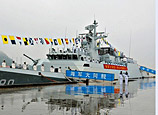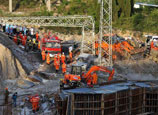
As long as trade keeps flowing, the two sides can gradually resolve the imbalances in the process, said Liu.
Both Liu and Zhang agreed weak manufacturing and infrastructure are the main areas restraining India's development and in which China can play a more constructive role.
"Given the size of the two countries' markets, bilateral investment is not growing fast enough," said Liu, suggesting investment restrictions in India is mainly to blame.
As material and labor costs in China rise, India, which aims to improve its manufacturing and create more jobs, can serve as an ideal transferring base for Chinese businesses, she said.
In a joint statement issued on Monday, the Indian side said it welcomed Chinese enterprises to invest in India and participate in the country's infrastructure development.
The cooperation potential between the two countries is huge provided they foster a peaceful environment for common development, Liu said.
"As the world's two major developing economies, the vital thing is to always stay on a track that is conducive for growth to push for the common interests for the less developed regions," Zhang said.
Only in that way can the two countries really become the new engine of the world economy, he added.
 |
















 China’s weekly story
China’s weekly story
(2013.5.11-5.17)


![]()
